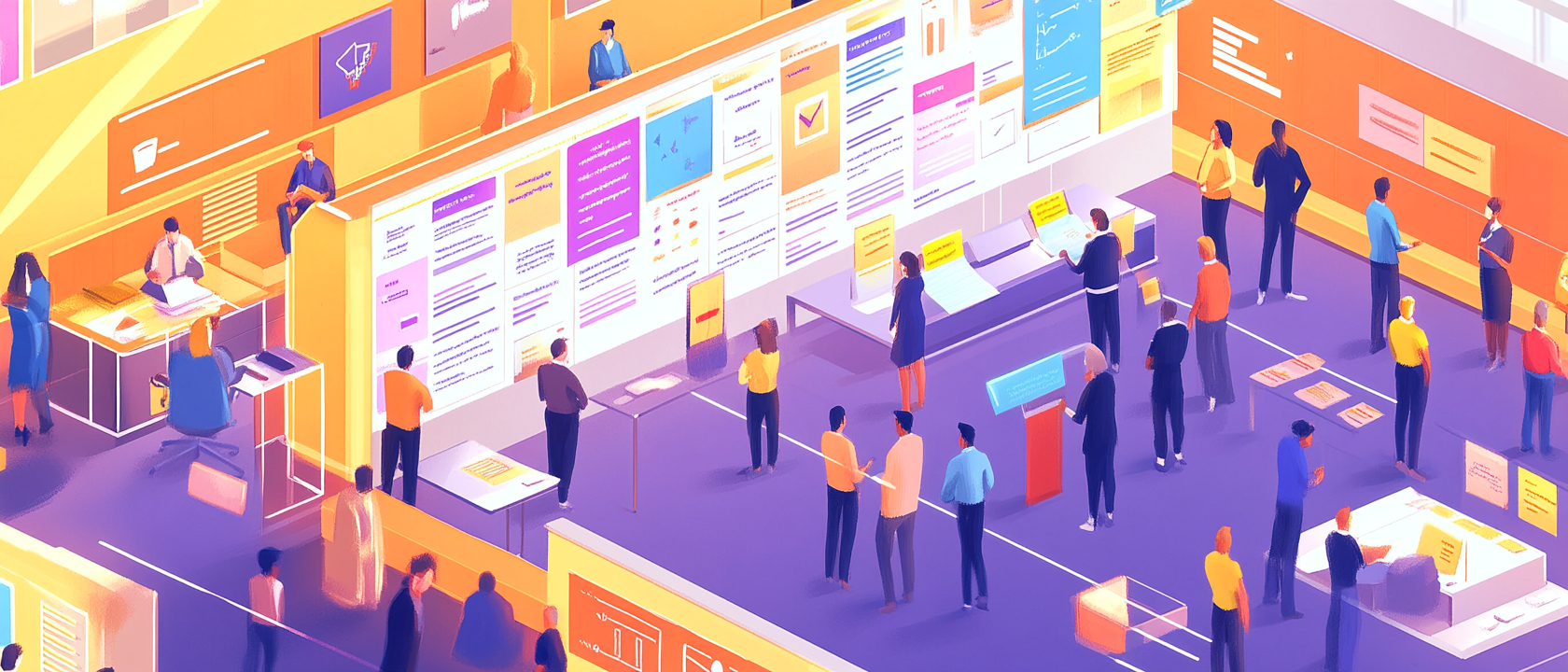
In Part 1 - The Cultural Compass - Navigating All Sizes of Organizations, we explored how human and organizational dynamics affect development success. We examined workflow bottlenecks, training inconsistencies, knowledge sharing challenges, and entrenched practices all critical for building continuous improvement cultures. As organizations scale, frameworks like Scaled Agile Framework (SAFe) emerge, but efficient and effective implementation requires thoughtful integration to the multi-functional team structure, rather than rigid adherence.
Applying Agile methodologies at enterprise scale requires balancing theory with practicality. Rigid framework adherence creates unnecessary overhead, while experience shows that core Agile principles remain valuable when thoughtfully adapted to organizational realities. In the consulting world, where fixed budgets and tight deadlines are the norm, every minute saved from excessive ceremonies translates to more time advancing the project. Unlike product companies with flexible resources, consulting efficiency creates an exponential benefit: simultaneously increasing productive time while eliminating waste. This dual advantage accelerates project momentum and ultimately delivers more value to clients.
- Focus on Value, Not Just Ceremony: While Agile ceremonies like stand-ups are useful, they must remain focused and concise. Encourage brief updates, identification of blockers, and parking lotting deeper discussions for smaller, relevant groups.
- Elevate Design Thinking and UI/UX Strategy: While SAFe by the book can heavily emphasize engineering processes, ensure UI/UX strategy inputs and Design Thinking methodologies are treated as first-class citizens. They must be deeply integrated into the SAFe process from ideation through delivery, not merely as an afterthought or downstream review step, recognizing that the design process is as critical as the engineering process for building successful products.
- Streamline Estimation and Planning: Detailed estimation exercises involving the entire team (like traditional Planning Poker) can be inefficient. Consider lean approaches where technical leads provide estimates, leveraging asynchronous communication (chat, comments in work items) for clarification, reserving meetings for complex issues.
- Optimize Refinement and Grooming: User story refinement can often be handled effectively through collaborative tools (Jira, Azure DevOps) and asynchronous chat, minimizing meeting time. Backlog grooming should primarily be the Product Owner’s responsibility, informed by stakeholder input and team capacity, rather than requiring extensive team meetings.
- Prioritize Cross-Functional Collaboration: Design reviews and Feature handoffs benefit significantly from full team involvement to ensure shared understanding and collective ownership of the features, requirements, and user experience. This is where the main understanding of the product occurs for the engineering team.
- Efficient Program Increment (PI) Planning: Efficiency hinges on three key elements: solid preparation, a clear and adaptive structure, and strong facilitation. PI Planning is an essential component of enterprise Agile, providing a dedicated forum for teams and stakeholders to align on goals. By doing the necessary groundwork—refining the backlog, aligning on vision, and confirming logistics—and running the event with time-boxed sessions, clearly defined roles, and visible boards, you create the conditions for teams to plan confidently, collaborate effectively, and deliver real business value.
- Focused ART Syncs: An Agile Release Train (ART) Sync is a short, regular SAFe meeting aligning multiple teams on PI objectives. Focus on blockers, dependencies, risks; keep a consistent agenda (quick ROAM review); involve only essential participants (Scrum Masters, Product Owners, stakeholders). A strong facilitator (often the Release Train Engineer) ensures concise discussion and action tracking, enabling swift issue resolution and ongoing alignment.
- Rethinking Sprint Cadence: Sprint Retrospectives, Goals Reviews, and Demos are vital. However, consider their frequency. For two-week sprints, holding these every other sprint might reduce overhead, but requires clear expectation setting (see below). For four-week sprints, holding them at the end of each sprint makes sense.
- Choosing Sprint Length Wisely: In my experience, two-week sprints can be too short for larger SAFe teams, creating unnecessary overhead and constant pressure from frequent cycle transitions. If you choose two-week sprints, set clear stakeholder expectations: achieving “Done” requires stories to enter QA several days before sprint end, leaving at least a few days for testing, fixes, and deployment. Conversely, four-week sprints provide two to three weeks for focused development plus a full week for QA, bug fixes, deployment, and planning. This approach reduces repetitive ceremonies, lowers team stress, and helps prevent accumulating technical debt. As the saying goes, “It’s best to finish what you started before beginning something new.”
The goal is not to abandon Agile, but to tailor its implementation to maximize value delivery and minimize unproductive overhead, especially within the context of fixed budgets and defined contract deliverables common in B2B environments. Be cautious of coaching that emphasizes process purity over practical delivery outcomes, especially if detached from the realities of budget constraints and end-to-end software creation efficiencies.
Next Steps
In this part, we’ve focused on tailoring Agile practices like SAFe for pragmatic enterprise use, aiming for efficient workflows and value delivery that respect organizational realities. But streamlined Agile processes are only part of the equation for rapid, reliable software delivery. To truly accelerate development cycles and ensure quality, especially in the dynamic world of mobile applications, robust technical automation through DevOps practices is essential.
In our upcoming Part 3 - Accelerating Application Delivery with DevOps, we will shift focus to the technical backbone that powers modern development. We’ll dive into the critical Continuous Integration/Continuous Deployment (CI/CD) pipelines and explore the specific tools—like Jenkins, GitHub Actions, Fastlane, Buildkite, and Bitrise—that automate the building, testing, and deployment of mobile applications, bridging the gap between development and operations for maximum efficiency. Join us as we explore how to build and optimize these essential pipelines.